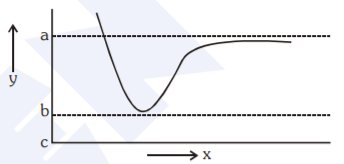What causes nitrogen to be chemically inert ?
1) Multiple bond formation
2) Absence of bond polarity
3) Short internuclear distance
4) High bond energy
Multiple bond formation
Absence of bond polarity
Short internuclear distance
High bond energy
The correct Answer is:A
Step by step video, text & image solution for What causes nitrogen to be chemically inert ? 1) Multiple bond formation 2) Absence of bond polarity 3) Short internuclear distance 4) High bond energy by Chemistry experts to help you in doubts & scoring excellent marks in Class 12 exams.
Topper's Solved these Questions
- BOOK - ICSECHAPTER - P-BLOCK ELEMENTSEXERCISE - EXERCISE (PART-I)(Do not change the whole sentence)20videos
P-BLOCK ELEMENTS
- BOOK - ICSECHAPTER - P-BLOCK ELEMENTSEXERCISE - EXERCISE (PART-I)(MATCH THE FOLLOWING)1videos
P-BLOCK ELEMENTS
- BOOK - ICSECHAPTER - P-BLOCK ELEMENTSEXERCISE - EXERCISE (PART-I)(OBJECTIVE QUESTIONS)(FILL IN THE BLANKS)30videos
P-BLOCK ELEMENTS
- BOOK - ICSECHAPTER - ORGANIC COMPOUNDS CONTAINING NITROGENEXERCISE - ISC EXAMINATION QUESTIONS ( PART-II DESCRIPTIVE QUESTIONS)33videos
ORGANIC COMPOUNDS CONTAINING NITROGEN
- BOOK - ICSECHAPTER - POLYMERS EXERCISE - ISC EXAMINATION QUESTIONS10videos
POLYMERS
Similar Questions
Knowledge Check
- Question 1 - Select One
During the formation of a chemical bond potential energy of the system
AincreasesBdecreasesCneither increases nor decreasesDremains constant. - Question 2 - Select One
Assertion :-The formation of a chemical bond involves a decrease in the potential energy of the system.
Reason :- According to Lewis, the formation of a chemical bond involves the gain, loss or sharing of electrons.AIf both Assertion and Reason are CORRECT and Reason is the CORRECT explanation of the AssertionBIf both Assertion and Reason are CORRECT but Reason is not the CORRECT explanation of the Assertion.CIf Assertion is CORRECT but Reason is INCORRECT.DIf Assertion is INCORRECT but Reason is CORRECT.
The potential energy(y) curve for H2 formation as a function of inrtnuclear distance(x) of the H atoms is shown below

The bond energy of H2 is :View SolutionParthenocarpy and apomixis are similar in
1) Absence of fertilization
2) Absence of embryo formation
3) Absence of fruit formation
4) Absence of seedsView SolutionWhat is the nature of C to C bond in C2H4?
View SolutionElements A, B and C have atomic numbers 9, 10 and 20 respectively. State which one is
(i) a metal
(ii) non-metal
(iii) chemically inert.
Explain the formation of bond between any two elements. Draw its orbital diagram. Name the type of bond.View SolutionUsing the data provided, calculate the multiple bond energy (kJmol−1) of a C≡C bond in C2H2. That energy is ( take the bond energy of a C−H bond as 350kJmol−1).
2C(s)+H2(g)→C2H2(g),Δ=225kJmol−1
2C(s)→2Cg),ΔH=1410kJmol−1
H2(g)→2H(g),ΔH=330kJmol−1View SolutionUsing the bond enthalpy data given below, calculate the enthalpy of formation of acetone (g).
Bond enegry C−H=413.4kJmol−1,
Bond enegry C−C=347.0kJmol−1,
Bond enegry C=O=728.0kJmol−1,
Bond enegry O=O=495.0kJmol−1,
Bond enegry H−H=435.8kJmol−1,
ΔsubHΘC(s)=718.4kJmol−1View Solution

